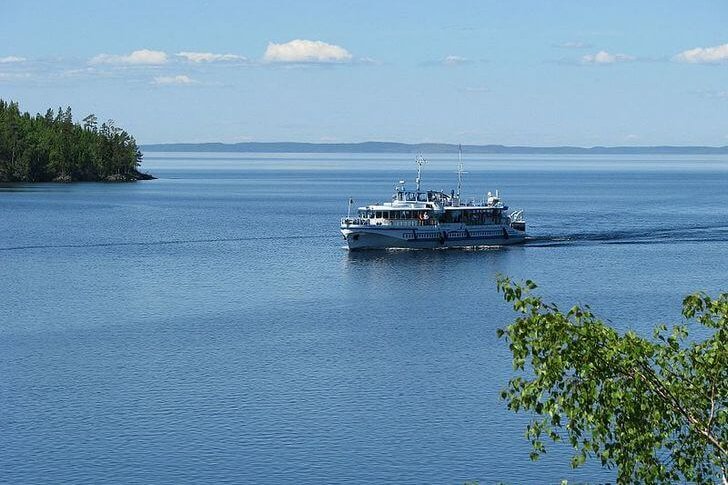Sortavala in the past was a Swedish and Finnish fiefdom, and now it is a small Karelian town. It is a very interesting and popular tourist destination due to its interesting architecture, not typical for the Russian North, picturesque and harsh nature, as well as the proximity of Lake Ladoga and Valaam Island. In the summer, there are many travelers who prefer eco-holidays and pilgrims heading to the Valaam stavropegial male monastery.
It so happened that Sortavala was part of three states, so its cultural and historical heritage is of great value. There are many wooden houses in the town, which are 150-200 years old, and stone buildings made in the usual styles of European architecture.
What to see and where to go in Sortavala?
The most interesting and beautiful places for walking. Photos and a short description.
city architecture
Sortavala was founded by the Swedes, until the middle of the 20th century Finns lived in it, so the urban development has retained its typical Northern European appearance. Many buildings were built in the styles of Scandinavian and Western European Art Nouveau, pseudo-Gothic, neoclassicism. The most interesting objects include the building of the former town hall, the United Bank of the Nordic countries, the Bank of Finland, Leander's house and Winter's cottage, designed by Finnish and Swedish architects. There are many interesting wooden buildings in the city. Unfortunately, many of them are not in the best condition due to lack of proper care.

Kirov Square
The main square of Sortavala, around which the main attractions are located. By itself, it is nothing special - a rather small space with standard benches, paving stones and flower beds. From here it is convenient to start walking around the city, and Lake Lappäjärvi, a pier with a ferry pier and the Karelian Bridge are also very close to the square.

Museum of Kronid Gogolev
The private collection of the national artist K. A. Gogolev is located on the territory of the mansion of the end of the 19th century, erected by a Finnish architect. The master specialized in wood carving (in this art he achieved outstanding results). The main exhibits are sculptural wooden bas-reliefs, as well as paintings. The main theme of the works is the northern landscapes, the life and life of the peasants.
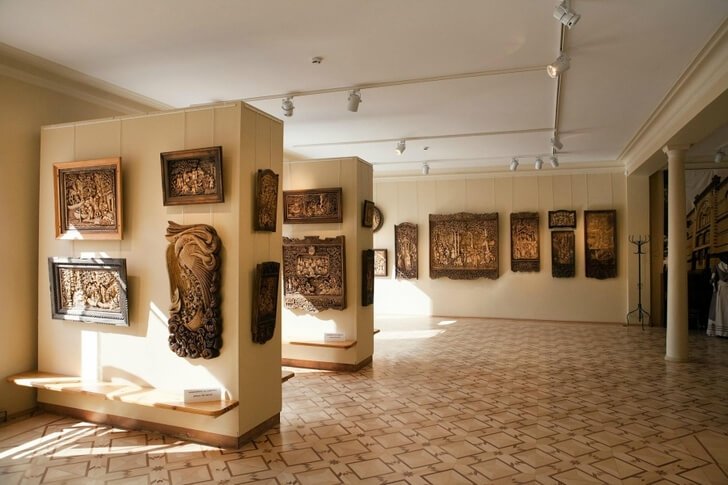
Museum of Northern Ladoga
The museum collection consists of interesting and varied exhibits. Here you can see medieval Swedish armor, samples of rare rocks of granite and marble, works by folk artists of Karelia dedicated to the Kalevala epic, photographs, handicrafts. The exposition is quite extensive for a small regional museum, which provides the institution with a steady flow of visitors.
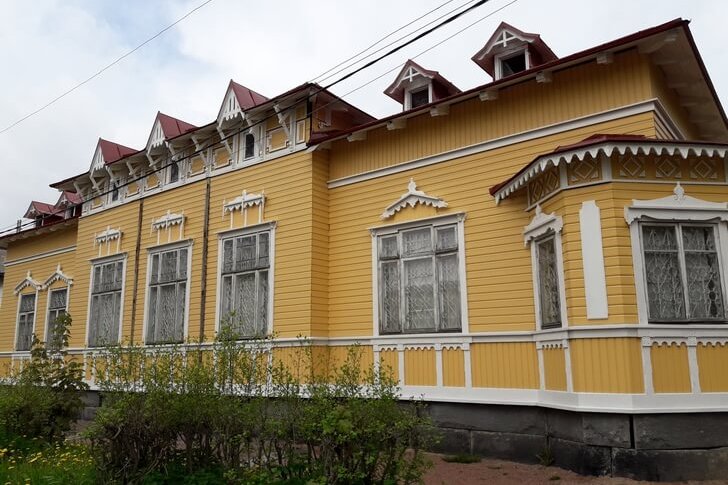
wish stone
A granite boulder located on the picturesque shore of Lake Lyappäjärvi, not far from the city pier. Near it is equipped with a small area with comfortable seating. A block is a piece of rock. There is a belief that if you touch it and make a wish, it will certainly come true, which is why the stone was given such a name.
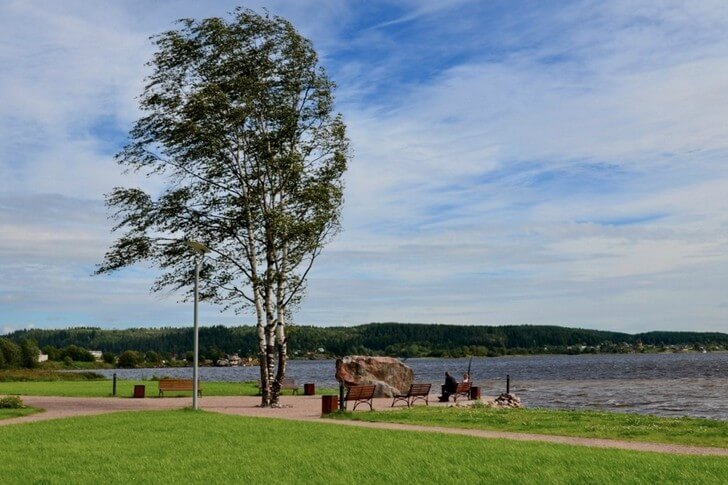
Karelsky bridge
Bridge across the Vakkolahti Bay, which is part of Karelskaya Street. It was built in the 1930s by a Danish engineering firm. At the beginning of World War II, its northern part was blown up, but in 1943 the Finns restored the structure. Another renovation took place in the 1970s. The last reconstruction of the bridge was carried out in the 2000s. Today, pedestrians and cars are allowed on it.

Monument to the rune singer
The monument was created by the famous sculptor Allo Sailo in the 1930s. It is the embodiment of the image of all Karelian rune singers, although according to one of the widespread versions, the monument has a specific prototype - the folk storyteller Petri Shemeika, whom A. Sailo is personally acquainted with. Part of the money for the monument came after the song festival, the other part was donated by the local judge K. G. Berg.

Church of John the Evangelist
A small temple built in the 1930s according to the project of J. Viiste. It is made in traditional restrained forms, more typical for Protestant churches in Northern Europe, although it was built for an Orthodox parish. Perhaps the only decoration of the facade is the runic symbols located at the base of the hipped bell tower; there is no other decor on the smooth white walls.

Church of St. Nicholas
St. Nicholas Church is one of the first Orthodox churches in Sortavala, made of stone. It was erected in the second half of the 19th century. It is interesting that the building was built mainly with donations from the St. Petersburg merchant G. P. Eliseev, who had previously won a large sum of money in the lottery and decided to do a charitable deed, putting an unexpected jackpot on the construction. The church was not damaged during the wars and was not destroyed during the Soviet period.
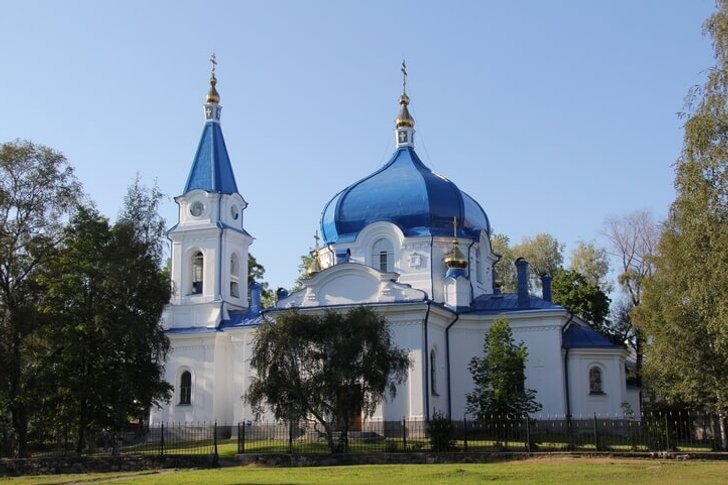
Vakkosalmi City Park
The park is located in the central part of Sortavala, but it looks more like a forest than a landscaped area. There are alleys for walking here, but there are no usual attractions and food stalls. Vakkosalmi is located on the slopes of Mount Kuhavuori, overgrown with pines, birches and firs. This hill has a very comfortable shape, so visitors do not need to climb its steep slopes while walking.
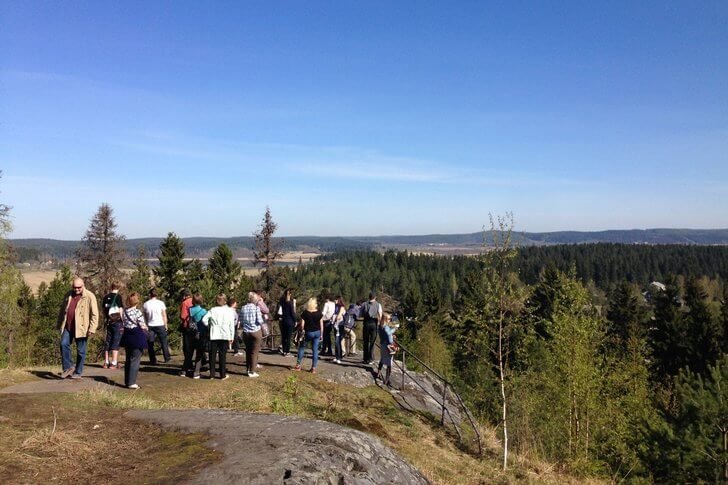
Mount Paaso
Paaso can hardly be called a mountain. Rather, it is a hill only 80 meters high, located on the outskirts of Sortavala. The name came from the Karelian settlement that existed on its summit in the 13th century. A series of archaeological excavations were carried out on the territory of the mountain, as a result of which scientists discovered many artifacts from different eras (the most ancient are over 1000 years old). A footpath leads to Paaso, from the top you can see the village of Khelulya, neighboring with Sortavala.
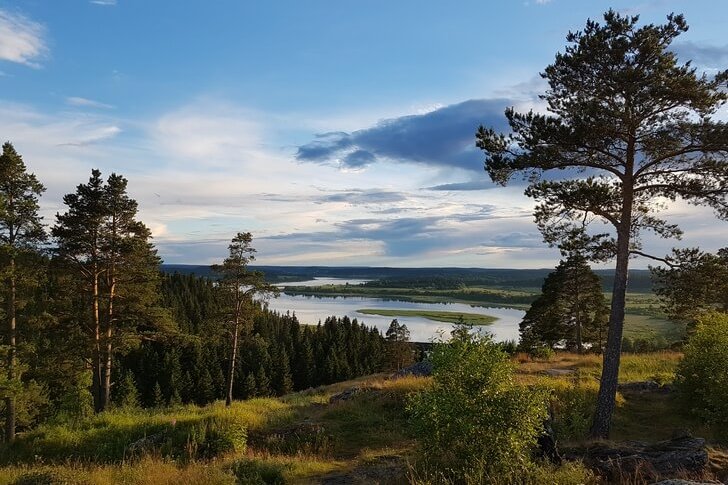
Mountain Park "Ruskeala"
The park is located on the territory of the quarry of the same name, where marble was mined until the 19th century. It was decided to organize a tourist infrastructure in abandoned deposits in 2005. Hiking trails were equipped for visitors, boat rentals and equipment for extreme sports were organized. Over time, hotels and recreation centers began to appear in the park area.
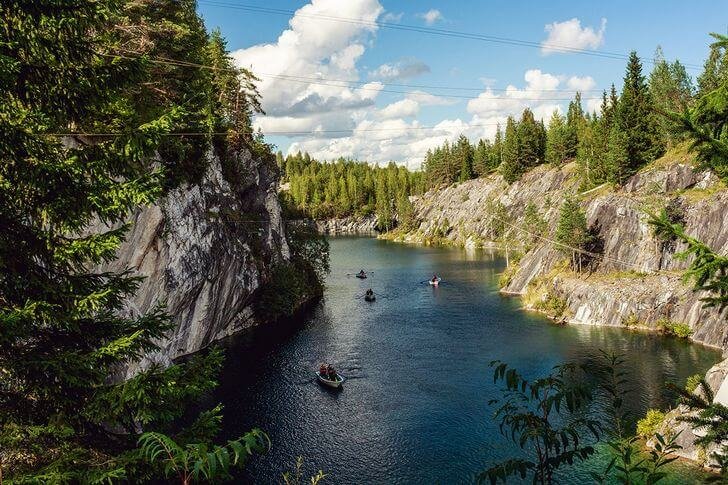
Ruskeala waterfalls
Water cascades are located next to the Ruskeala canyon. They are quite popular with tourists - every year thousands of people come here to admire the bewitching views of northern nature. The waterfalls reach a height of 4 meters. Falling streams wash over granite boulders and slopes of moss-covered rocks, the water itself has a rusty tint due to the high content of iron. Thanks to this contrast of colors, a very expressive picture is formed.

Valaam Island
The island is part of the Valaam archipelago, which is located in the northern part of Lake Ladoga. This is a fairly popular tourist destination, known throughout Russia. The main object of the visit is the Valaam stauropegial monastery. The complex is a unique monument of temple architecture. It was founded in the 11th century, but the oldest building (Skete of All Saints) dates back to the end of the 18th century.

Ladoga lake
The largest freshwater reservoir in Europe with a coastline of more than 1.5 thousand km. Since ancient times, Finno-Ugric peoples and northern Slavs settled on its banks. On Lake Ladoga there are many sandy beaches that attract tourists in summer, many recreation centers, hotels offering guests a wide variety of leisure activities from hiking and cruises to water sports.
